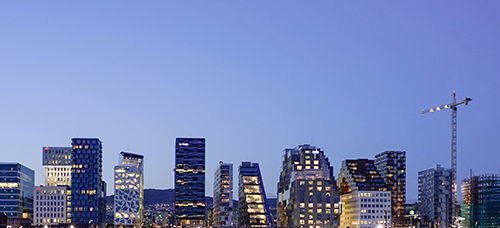German LNG-Terminals: Hydrogen infrastructure by detour?
In an article, which was recently published in the 02/2024 issue of the German Zeitschrift für materielles und prozessuales Klimarecht (KlimaRZ), we took an in-depth look at the latest developments in the field of hydrogen infrastructure and Germany's endeavours to become the market leader in the use of hydrogen. The article focuses on the German LNG Acceleration Act and its contribution to the envisaged "ramp-up of hydrogen technologies". We also focus on the rise of hydrogen, in particular green hydrogen, as a political and social favourite. The following summary provides a compact overview of the contents of our article.
In the course of efforts to achieve climate neutrality by 2045, German policymakers and the energy sector are facing major challenges in the area of hydrogen production and utilisation: From securing land for renewable energies to creating a coherent legal framework. The German LNG Acceleration Act (LNGG) plays a central role, as it aims to build terminals for liquefied natural gas (LNG) that are "hydrogen-ready". As a compromise response to the end of Russian gas imports in 2022, the LNG terminals are a temporary solution that allows accelerated operating licences for a limited period until 31 December 2043 and enables the subsequent long-term conversion to "climate-neutral" hydrogen.
As it is difficult to produce sufficient green hydrogen within Germany, it is expected that 50-70% of it will have to be imported. Various hydrogen partnerships, for example with Canada and the USA, have already been initiated. The transport problem of hydrogen is to be solved by liquefaction or derivatives such as ammonia. As the import of hydrogen via the terminals initially used for LNG will also be of crucial importance for further distribution within Germany, we also briefly discuss the current status of the German hydrogen core network in our article. This is because the Federal Network Agency is expected to approve the plans submitted by the transmission system operators at the end of July 2024, so that the core network can be put into operation as planned by 31 December 2032.
After providing an overview of the current German hydrogen plans, our article focuses on the main provisions of the LNGG and the current case law of the Federal Administrative Court. We provide a brief overview of the current status of the LNG terminals and the hurdles that still need to be overcome for the widespread use of hydrogen.
The LNG Acceleration Act
The LNGG was passed in a record-breaking ten days and came into force on 1 June 2022. The aim is to accelerate the approval and construction of German LNG terminals and connection pipelines in order to secure the national energy supply, at least make it independent of Russian gas. The scope of application extends to specific projects named in the annex at sites in Brunsbüttel (Schleswig-Holstein), Wilhelmshaven (Lower Saxony), Stade/Bützfleth (Lower Saxony), Mukran/Hafen (Mecklenburg-Western Pomerania) and Lubmin (Mecklenburg-Western Pomerania).
Section 3 LNGG defines the "special interest" of the projects, as they are considered "particularly urgent" for the secure supply of gas. The Federal Administrative Court emphasises that this overriding public interest cannot be invalidated in principle by the current stability of the gas supply situation. The legislator's broad scope for organisation and forecasting is only exceeded in the event of a manifestly unobjective determination of need.
Pursuant to Section 4 of the LNGG, exemptions from the environmental impact assessment allows accelerated authorisation for certain LNG projects, with the exception of land-based facilities and gas pipelines. The approval authorities can waive an environmental impact assessment if the accelerated approval serves to manage or avert a gas supply crisis (Section 4 (1) LNGG). The Federal Administrative Court confirmed the compatibility of these exemptions with the EU EIA Directive and also emphasised that a time-limited public display of the application documents offers an appropriate degree of transparency. The court also defined criteria for a gas shortage situation and emphasised the importance of the LNG terminals' capacity for assessing its contribution to the gas crisis management.
Section 5 LNGG modifies the application of the Federal Immission Control Act for floating facilities and steam and hot water pipelines and shortens public display periods. Above all, an emission control law permit must be issued with the provision that LNG operations must be discontinued by 31 December 2043 at the latest, unless operations are continued with climate-neutral hydrogen. Continued operation with hydrogen must be applied for by 1 January 2035. According to the case law of the Federal Administrative Court, LNG operators are entitled to utilise the maximum period for operation with LNG. This means that the licensing authorities cannot unilaterally determine an early termination of operations or conversion to hydrogen.
Section 6 LNGG modifies the Federal Nature Conservation Act with regard to compensation and replacement measures. Similar to immission control law, the periods for interpretation and objections under the Water Resources Act are also modified. The Energy Industry Act and Administrative Procedure Act are adapted by Section 8 LNGG, in particular with regard to the public display and objection periods.
The other procedural provisions in Sections 10 et seq. LNGG allow for online announcements and consultations, waive the suspensive effect of legal appeals and assign jurisdiction in the first and last instance to the Federal Administrative Court.
Status quo of the LNG terminals
Most of the projects covered by LNGG for floating LNG terminals and connecting pipelines are currently under construction or already in operation, while planning and authorisation procedures for most land-based LNG terminals are still ongoing. It is expected that the majority of operators will switch to climate-neutral hydrogen by 2044 at the latest, but the exact realisation and adherence to these timetables remains to be seen.
Hurdles and challenges
The implementation of the German hydrogen plans by converting the LNG terminals faces legal hurdles, as lengthy (amendment) approval and court proceedings are still possible and likely despite the acceleration due to LNGG, especially with the planned conversion to hydrogen from 2044 at the latest. The time limit of the applicability of the LNGG until 2025 and potential, unforeseeable political decisions (both national and foreign, such as the USA temporarily stopping LNG exports) in the coming years could influence the plans. Furthermore, the investment decisions of the plant operators and the uncertainty regarding government support for the conversion pose additional challenges.
The "H2-ready" LNG terminals and pipelines, made possible by LNGG, can accelerate the transition to hydrogen, but will not be sufficient on their own to meet the challenges of the large-scale use of hydrogen. In any case, LNGG has successfully accelerated the approval processes and construction times for LNG terminals to date, but the decisive factor will be switching to the use of hydrogen or its derivatives as soon as possible. It remains to be seen whether operators will have the necessary flexibility and political will to utilise the full potential of LNG plants and, ideally, to transfer the exemplary LNGG pace to renewable energy generation projects, including the necessary grid infrastructure.
You can also find out more about LNGG in other articles here (only in German) and here. Please feel free to contact us if you have individual questions.




